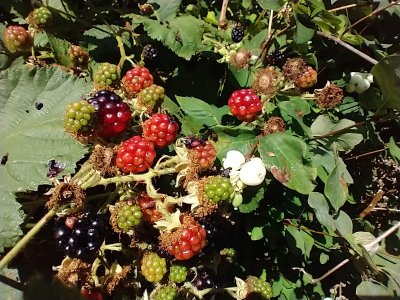- Thread starter
- #2,261
heirloomgal
Garden Addicted
- Joined
- Jan 17, 2021
- Messages
- 5,132
- Reaction score
- 16,843
- Points
- 285
- Location
- Northern Ontario, Canada
The aggregate nature of Reisotomate and that uneven ripening is feature I do not appreciate. Some bits are green while much is red, and while you wait for green parts to turn red, the already red parts turn mushy!At this point, all of the first flush of Spoon tomatoes are inside (though not all totally ripe; after the birds took some, I started bringing them in as soon as they started to change color and let them finish up inside where they are protected.) There's a tiny start of one one plant, but, other than that, I currently see no new flowers of a second flush (and the plants are beginning to crinkle up by now anyway.)
The first and largest of the Phil's Two tomatoes has ALSO started to color up, but, since Phil's Two is an aggregate tomato (like Riesentraube) it turns out the different lobes ripen at different rates, so I can't bring it in until ALL of them have started to change color. I just have to hope the birds don't start attacking the ripe side while I'm waiting on the unripe side.
There are six other fruits on those plants, but all are much smaller than the first one, and, based on their rate of growth over the last few weeks, I'm not sure any will get any bigger
I also have seen nothing but unflattering taste reviews about Lutescent over the years. Curioisty got the better of me this year and I finally grew it, mostly to see what it looks like. The foliage was definitely sickly looking, the fruits went through that true creamy white stage. But I ate my first tomato today and I was SHOCKED. It was actually incredibly delicious, right up there with the best beefsteaks this year. This leads me to wonder if it really needs certain conditions to develop it's sugars? We had a really ideal summer, even the rain fell reasonably and well spaced out for most veggies. I also grew the plant in a container which always makes them taste better. I can't believe they didn't taste awful!
Last edited:

